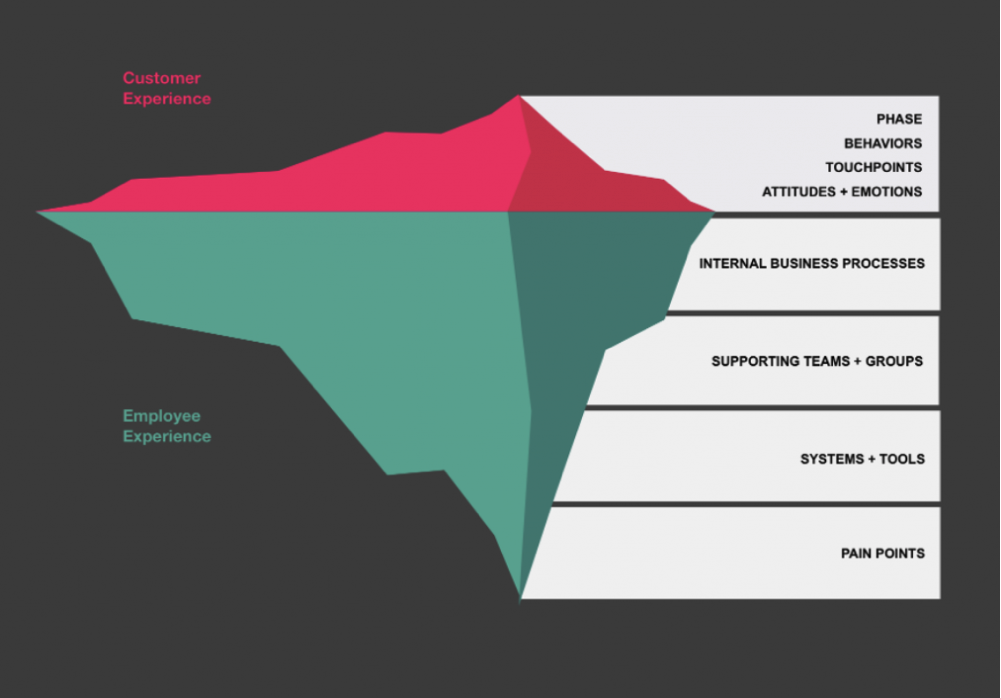How Your Employee Experience Powers Your Customer Experience

What’s the key to creating a lovable customer experience?
This is one of the most compelling questions in business today. After all, Brian Solis, author of X: The Experience When Business Meets Design, wrote, “Experience is the new brand.” There is no single answer, but here’s an important one that businesses need to pay more attention to:
To create lovable customer experiences, start by creating lovable employee experiences.
This principle makes intuitive sense. Companies that figure out how to create great employee experience do two things:
- Attract and retain the best talent to continuously create positive customer experiences.
- Make it more natural for employees to create great customer experiences because their culture encourages this behavior each day.
In short, a great employee experience creates a foundation for creating customer experiences.
In 2020, building this foundation is even more important. Time and again throughout this tumultuous year, people are turning to employers to make a more meaningful difference in their lives, whether by fighting the spread of the COVID-19 pandemic or making the world more socially just. As a result, Forrester analyst Dipanjan Chatterjee wrote recently, “Brand and employee experience are inextricable.”
But what exactly do we mean by creating a great employee experience?
- Understanding what it means to empower employees to bring their whole selves to work. When people feel comfortable enough to bring their whole selves to work, you know you’ve created the right kind of environment for employees to act as naturally around each other in the workplace as they do everywhere in their lives.
- Assessing candidly how the company’s leadership can foster an environment where employees can pursue meaningful and purposeful lives as they do outside the workplace (something I blogged about here).
- Applying tools to map the entire employee experience in order to identify the key moments that contribute to the development of a more meaningful experience.
When purpose-driven, mindful leaders apply the right tools and processes, they unlock the keys to creating a true employee experience. For example, I believe Seema Jain is on the right track when she discusses the importance of employee journey maps alongside customer journey maps. She writes, “Employee satisfaction is the leading indicator to customer experience.” And she illustrates the importance of the employee experience in a compelling way:

Image Source: MURAL – Customer and Employee Journey Map
As she puts it, co-creating journey maps with employees “expose[s] the internal workings of the organization, including the business processes, systems, tools, and cross-functional teams that facilitate and support the customer’s experience. Inviting participants across business functions is key to gathering the day-to-day realities of all employee functions and groups.”
Put another way: when you map the entire employee experience journey, you identify those opportunities to empower employees to rally around your culture fully – to believe naturally in your business and in each other. That’s because the process, when done correctly, involves employees and honestly identifies their pain points. And you cannot create an experience without knowing what those pain points are.
We are inspired by Seema Jain’s perspective and have put the Customer and Employee Experience Map into practice. Here are our top three insights for elevating the employee experience at Moonshot:
1.) Start with the who. The employee experience can be vast and diverse (e.g., new vs. existing employee, levels within the organization, geographic location, etc.). Trying to create a comprehensive employee experience that takes into account all variations can become difficult to manage. To hone in on which employee experience to focus on first, we use a bullseye diagram.

2.) Use the 5Es to break the employee experience into phases. With the employee personas clearly identified, focus on the employee experience in its entirety. To help establish focus, we use the 5Es model to break the end-to-end experience into digestible chunks. For example:
- Entice: how does a potential employee discover our company? What’s their first impression? What are all the touch-points and communications up to a new employee’s first day?
- Enter: how might we make an employee’s first day as lovable as possible? How might we enhance the onboarding experience?
- Engage: this is the biggest phase of the employee experience; an employee’s day-to-day. How might we enable a culture of continuous feedback? How might we provide trust and transparency throughout an employee’s tenure?
- Exit: how might we provide the smoothest offboarding experience possible?
- Extend: how might we create a post-Moonshot experience that fosters connection and positivity? How might we increase our net promotor score for past employees?
(Check out this blog to learn more about the 5Es model.)
3.) Identify moments of truth for both peaks and pits. In Chip and Dan Heath’s book titled The Power of Moments, the authors describe the concept of peaks and pits in a journey; the highs and lows of an experience. The key takeaway for me is that experiences can be improved not only by filling the pits (i.e., making the low points better), but also by accentuating the peaks (i.e., making the high points even higher). For example, we’ve identified a peak as an employee’s first day at Moonshot. How might we continuously improve this experience to raise the bar for a new employee’s first day? Peaks and pits are also applicable, and critical, for ensuring positive customer experiences outside of our company.
Putting it All Together
Once an organization has a clear picture of the end-to-end employee experience, including prioritized peaks and pits, they can begin running experiments to continuously improve the employee experience. This ongoing pipeline of experiments positions the company to measure how improvements to the employee experiments can drive loyalty and advocacy. It’s simple – happier employees make happier customers.
How are you elevating the employee experience at your company?
